 |
Zoom Meeting Basics |
0.50 |
Zoom is a web-based video conferencing tool with a local, desktop client and a mobile app that allows users to meet online, with or without video. Zoom users can choose to record sessions, collaborate on projects, and share or annotate on one another’s screens, all with one easy-to-use platform. In this course we will go through the major features of Zoom Meetings. |
 |
Habitat Design |
2.00 |
Zoo staff are frequently asked to provide their expertise during the design and construction of an exhibit project. The more precise and timely their input, the better the exhibit will meet both the physical and psychological needs of the animals and their animal care staff. This course will provide a basic knowledge of the processes typically used to deliver projects and will help zoo professionals manage their efforts when they are called upon to be part of a project team. |
 |
Managerial Leadership: Motivating Employees Through Change |
0.50 |
Your organization’s vision was created to inspire and unite the members of the organization as they work toward achieving common goals. Change can distract employees from the vision because going through the change process can be intensely personal and emotional. Remembering the vision and its purpose can keep your employees focused on their role in the company.
In this course you will learn to: motivate employees through a change and prepare for difficulty, and overcome resistance and resolve conflict. |
 |
Managerial Leadership: Motivating Employees Through Change (Instructor Guide) |
0.50 |
Your organization’s vision was created to inspire and unite the members of the organization as they work toward achieving common goals. Change can distract employees from the vision because going through the change process can be intensely personal and emotional. Remembering the vision and its purpose can keep your employees focused on their role in the company.
In this course you will learn to: motivate employees through a change and prepare for difficulty, and overcome resistance and resolve conflict.
This Instructor's Edition of this course includes notes and suggestions to assist you in presenting the material, whether in an in-person classroom setting or as an instructor-led online or distance-learning course. It also provides you with the answers to questions found in mid-lesson activities, as well as in the quiz that concludes the course. |
 |
Framing: Documentation-Proper and Complete |
1.00 |
Your local training director, operations officers, and medical direction have expectations that should be met for each and every documentation piece that you provide. It is our intention to provide you with knowledge on this subject that will spark good discussion and hopefully a better overall product for you and your service. |
 |
Advanced Interpersonal Communication: Customers and Vendors |
0.50 |
Your customers include anyone who uses your company or organization to obtain goods and services. Customers might be internal or external. An internal customer is a member of your organization and can be a supervisor, colleague, or subordinate. An external customer is someone from outside your organization. Each customer is of equal importance, regardless of the amount of business that customer provides to your organization. You should provide the same level of quality goods and services all your customers, and all are equally deserving of efficient and effective communication.
In this course you will learn: to respond to customers’ complaints, and to reject a vendor’s contract without rejecting the vendor, and address a complaint to a vendor. |
 |
Advanced Interpersonal Communication: Customers and Vendors (Instructor Guide) |
0.50 |
Your customers include anyone who uses your company or organization to obtain goods and services. Customers might be internal or external. An internal customer is a member of your organization and can be a supervisor, colleague, or subordinate. An external customer is someone from outside your organization. Each customer is of equal importance, regardless of the amount of business that customer provides to your organization. You should provide the same level of quality goods and services all your customers, and all are equally deserving of efficient and effective communication.
In this course you will learn: to respond to customers’ complaints, and to reject a vendor’s contract without rejecting the vendor, and address a complaint to a vendor.
This Instructor's Edition of this course includes notes and suggestions to assist you in presenting the material, whether in an in-person classroom setting or as an instructor-led online or distance-learning course. It also provides you with the answers to questions found in mid-lesson activities, as well as in the quiz that concludes the course. |
 |
Draft Presentation: Storyboard of Results |
1.00 |
Your boss has asked you to present the results of your behavioral inquiry at a staff meeting. How do you tell the story of your project, providing enough detail so they will understand, but not too much so they will be able to focus on how this relates to the decision at hand? Listen to a research team present their draft presentation and offer suggestions about how this could be improved to enhance communication. Pick up some creative tips and offer a few of your own. |
 |
Motivation: Identifying, Planning, and Implementing: Positive Mental Attitude |
1.00 |
Your attitude affects every aspect in your life—from your family relationships to your interactions with strangers to your connections with business coworkers. Your attitude could determine the difference between getting a promotion and getting fired, and between a happy marriage and divorce. Stanford Research Institute (SRI) conducted a study that found that success is 88% attitude, and 12% education.
In this course you will learn to: improve your self-confidence, recognize your fears and work to overcome them, and identify the difference between perceptions and reality. |
 |
Motivation: Identifying, Planning, and Implementing: Positive Mental Attitude (Instructor Guide) |
1.00 |
Your attitude affects every aspect in your life—from your family relationships to your interactions with strangers to your connections with business coworkers. Your attitude could determine the difference between getting a promotion and getting fired, and between a happy marriage and divorce. Stanford Research Institute (SRI) conducted a study that found that success is 88% attitude, and 12% education.
In this course you will learn to: improve your self-confidence, recognize your fears and work to overcome them, and identify the difference between perceptions and reality.
This Instructor's Edition of this course includes notes and suggestions to assist you in presenting the material, whether in an in-person classroom setting, or as an instructor-led online or distance-learning course. It also provides you with the answers to questions found in mid-lesson activities, as well as in the quiz that concludes the course. |
 |
Cover Letters |
1.00 |
You've found the job you want to apply to and spruced up your resume. Now, all you have to do is submit it. Right? Not so fast! Every resume should have a great cover letter to go with it. |
 |
Project Teams: Conducting Team Meetings |
1.00 |
You should hold regular project team meetings in order to maximize the effectiveness of a project. After the team has been assigned, you should schedule an introductory meeting, and set team goals. The purpose of an introductory meeting is to familiarize team members with each other, introduce the facilitator and recorder, and clarify questions that team members might have.
In this course you will learn to: identify the various roles in project team meetings and maximize the effectiveness of team meetings, understand the goal setting process in introductory meetings, and identify various issues that a team might face during team meetings. |
 |
Project Teams: Conducting Team Meetings (Instructor Guide) |
1.00 |
You should hold regular project team meetings in order to maximize the effectiveness of a project.
After the team has been assigned, you should schedule an introductory meeting, and set team goals. The purpose of an introductory meeting is to familiarize team members with each other, introduce the facilitator and recorder, and clarify questions that team members might have.
In this course you will learn to: identify the various roles in project team meetings and maximize the effectiveness of team meetings, understand the goal setting process in introductory meetings, and identify various issues that a team might face during team meetings.
This Instructor's Edition of this course includes notes and suggestions to assist you in presenting the material, whether in an in-person classroom setting, or as an instructor-led online or distance-learning course. It also provides you with the answers to questions found in mid-lesson activities, as well as in the quiz that concludes the course. |
 |
Managerial Leadership: Employing Motivational Strategies |
0.50 |
You need to use motivational strategies in your leadership to help your employees perform optimally, and to make them feel as though they are helping meet a need. When you motivate your employees to accomplish their goals, and give them the necessary feedback to optimize their performance, they feel they are helping meet the organization’s needs.
You, your employees, and your organization all benefit when you use motivation in leadership. You benefit because, through motivation, your work group will perform optimally. Your employees benefit because they experience job satisfaction and success in accomplishing their goals. Your organization benefits because its members are more committed to helping it be successful and grow.
In this course you will learn to: motivate employees and overcome employee apathy. |
 |
Managerial Leadership: Employing Motivational Strategies (Instructor Guide) |
0.50 |
You need to use motivational strategies in your leadership to help your employees perform optimally, and to make them feel as though they are helping meet a need. When you motivate your employees to accomplish their goals, and give them the necessary feedback to optimize their performance, they feel they are helping meet the organization’s needs.
You, your employees, and your organization all benefit when you use motivation in leadership. You benefit because, through motivation, your work group will perform optimally. Your employees benefit because they experience job satisfaction and success in accomplishing their goals. Your organization benefits because its members are more committed to helping it be successful and grow.
In this course you will learn to: motivate employees and overcome employee apathy.
This Instructor's Edition of this course includes notes and suggestions to assist you in presenting the material, whether in an in-person classroom setting or as an instructor-led online or distance-learning course. It also provides you with the answers to questions found in mid-lesson activities, as well as in the quiz that concludes the course. |
 |
Business Problem Solving: Problem-Solving Process |
1.67 |
You need highly developed problem-solving skills to manage employees and achieve organizational goals. Understanding the problem-solving process is the first step in solving problems effectively.
In this course you will learn to: identify the problem by analyzing the situation, gathering information, and identifying solution criteria, commit to a solution by generating, choosing, and implementing one, confirm that the problem has been eliminated by evaluating the solution. |
 |
Business Problem Solving: Problem-Solving Process (Instructor Guide) |
1.67 |
You need highly developed problem-solving skills to manage employees and achieve organizational goals. Understanding the problem-solving process is the first step in solving problems effectively.
In this course you will learn to: identify the problem by analyzing the situation, gathering information, and identifying solution criteria, commit to a solution by generating, choosing, and implementing one, confirm that the problem has been eliminated by evaluating the solution.
This Instructor's Edition of this course includes notes and suggestions to assist you in presenting the material, whether in an in-person classroom setting or as an instructor-led online or distance-learning course. It also provides you with the answers to questions found in mid-lesson activities, as well as in the quiz that concludes the course. |
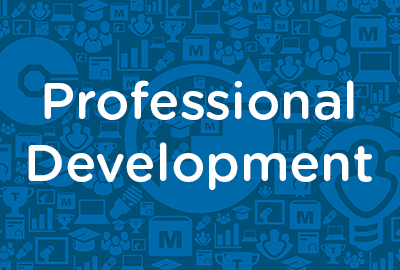 |
Cross-Cultural Business Communication: Cross-Cultural Business Situations |
1.00 |
You might be asked to attend or take part in cross-cultural meetings. Although cross-cultural meetings are common when you travel to a foreign country, they can also take place when several cultures send their representatives to attend meetings. These meetings might also take place over the telephone, online, or in a video conference.
In this course you will learn to: attend and organize cross-cultural meetings, conduct negotiations, and solve problems during a cross-cultural meeting. |
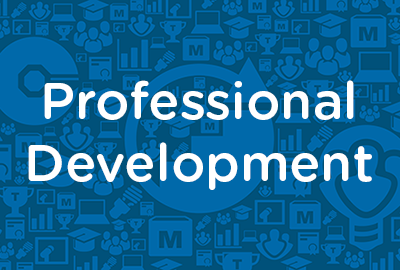 |
Cross-Cultural Business Communication: Cross-Cultural Business Situations (Instructor Guide) |
1.00 |
You might be asked to attend or take part in cross-cultural meetings. Although cross-cultural meetings are common when you travel to a foreign country, they can also take place when several cultures send their representatives to attend meetings. These meetings might also take place over the telephone, online, or in a video conference.
In this course you will learn to: attend and organize cross-cultural meetings, conduct negotiations, and solve problems during a cross-cultural meeting.
This Instructor's Edition of this course includes notes and suggestions to assist you in presenting the material, whether in an in-person classroom setting, or as an instructor-led online or distance-learning course. It also provides you with the answers to questions found in mid-lesson activities, as well as in the quiz that concludes the course. |
 |
Simple Statistical Analysis: Non-parametric |
1.00 |
You have collected behavioral data, now how do you decide which statistics to use to test your hypotheses? Learn about spreadsheets that will aid you in calculating the simple non-parametric tests suitable for most behavioral data. The first step is to plot your data and stare at it. A research team will demonstrate how to analyze bar graphs (contingencies), scattergrams (correlations) and box/whisker plots (means). |
 |
Managing Chronic Lower Back Pain in Older Adults |
0.50 |
You are here to gain a basic understanding of chiropractic management in older adults. There is a need for society to change its focus in the management of chronic pain syndromes from a “pain management” perspective to a “functional management” perspective. It’s important to recognize that pain and function do not necessarily equal each other. |
 |
Electricity |
1.00 |
Working with electricity can be dangerous. This course covers electrical safety while on the job. You will learn about the types of electrical-related injuries that can occur, and how to prevent them. |
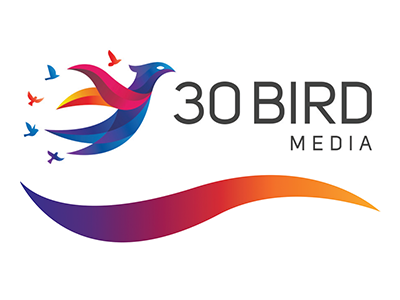 |
Microsoft Word 2019 Complete |
24.00 |
Word 2019 Complete provides the basic concepts and skills to be productive with Microsoft Word 2019, starting with fundamentals and working up to advanced tools and techniques. This course maps to the objectives of the Microsoft Office Specialist and Expert exams for Word 2019. Objective coverage is marked throughout the course, and you can download an objectives map from 30bird.com.
Students will benefit most from this course if they want to accomplish basic tasks in Word and then build on fundamental skills to become a power user. The course also provides a solid foundation in Word's advanced features before continuing on to more complex document management or VBA programming topics.
The course assumes that students know how to use a computer, and that they are familiar with Microsoft Windows. It does not assume that they’ve used a different version of Word or another word processing program. |
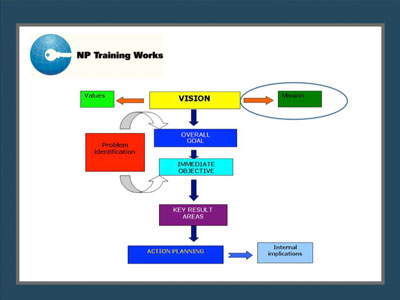 |
Creating and Implementing an Effective Strategic Plan for Your Organization |
1.00 |
Without strategic direction it is hard to get where you want the organization to go. This Webinar offers you a process for reaching your organizational goals. Strategic plans help your organization, or department, set the roadmap to make a significant mission impact. Through this Webinar you will learn a model for completing a Strategic Planning process in your organization. It covers the entire process from planning to defining the strategic framework and then creating a process for implementation activities. You will learn how to create a strategic framework that gives the activities coherence and direction, ensuring that your strategic plan becomes a living, breathing document that is fully utilized in the organization. You will also learn how to involve your board, staff, and other important constituencies in the process to increase your chances of successful implementation. In addition, you will receive leave-behinds that give you practical exercises and instructions to use during your strategic planning process. |
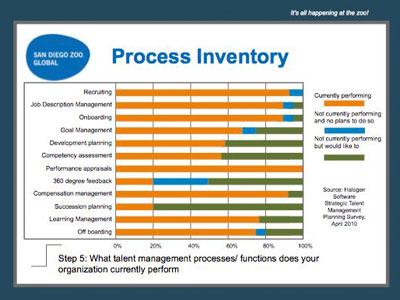 |
Mapping Your Performance and Talent Strategy for Results |
0.50 |
Without a "HR strategic talent management plan" tied to organizational goals, HR teams struggle to play a strategic role in their organization and talent management activities. Make the most of your only true sustainable competitive differentiator – your workforce. Learn to:
- Identify organizational goals/priorities. Define HR goals/priorities.
- Identify organizational drivers and challenges
- Identify gaps
- Articulate talent management processes/functions your organization currently performs
- Measure results. Communicate successes/contributions.
|


























